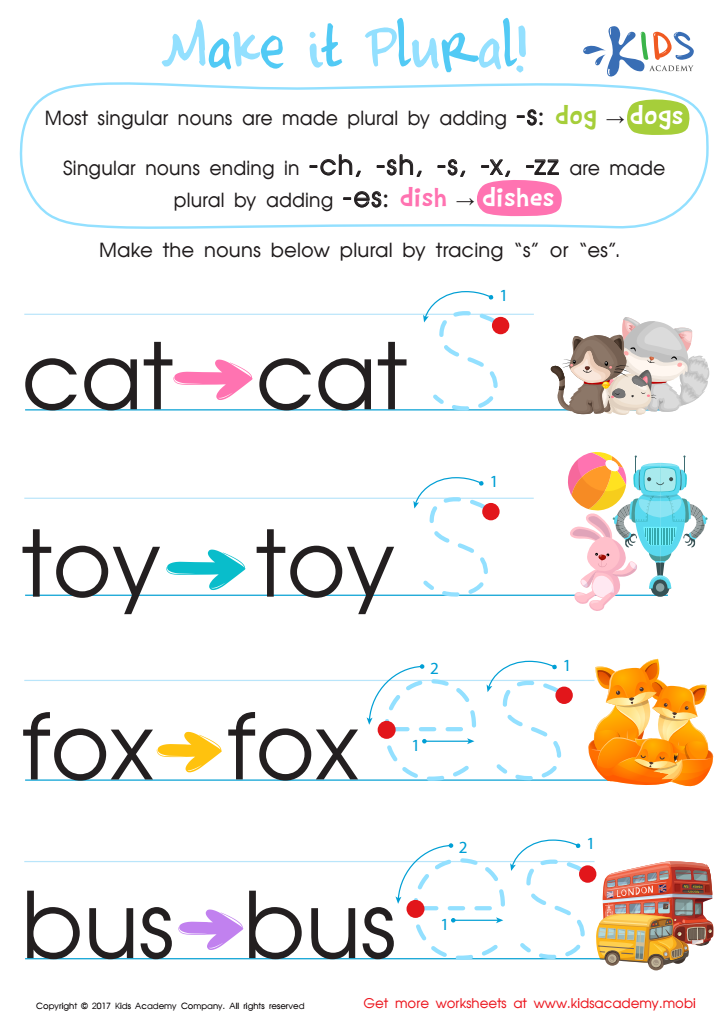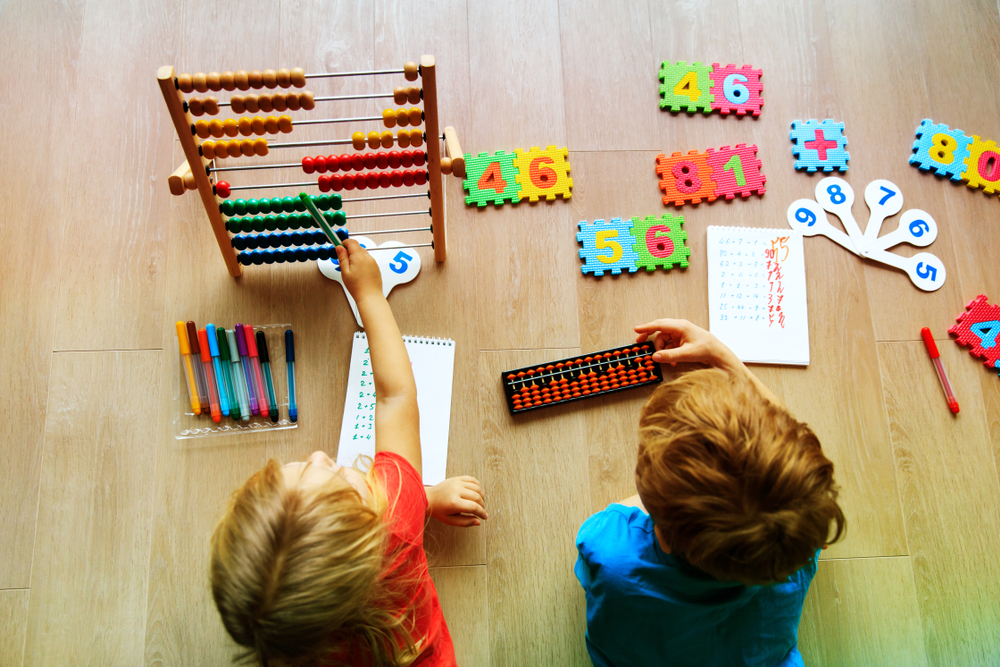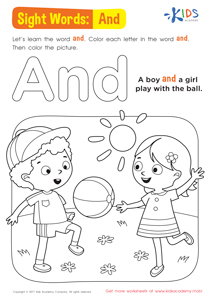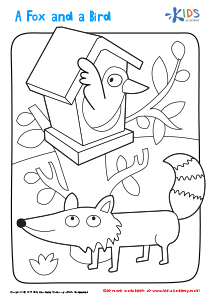Easy Tracing Letters worksheets activities for 4-Year-Olds
1 filtered results
-
From - To


Make it Plural Worksheet
Easy Tracing Letters worksheets activities serve as an invaluable resource in the realm of early childhood education, offering a multitude of benefits that are both immediate and long-lasting. These simple, yet effective activities are designed to introduce children to the alphabet in an engaging and interactive manner, paving the way for a successful journey into the world of reading and writing.
First and foremost, Easy Tracing Letters worksheets activities enhance fine motor skills. The act of tracing letters requires children to use precise hand movements, which aids in the development of the small muscles in their hands and fingers. This dexterity is crucial not only for writing but also for other tasks requiring fine motor skills, such as tying shoelaces or using scissors.
Furthermore, these activities promote letter recognition, a foundational skill in learning to read. By tracing each letter, children become familiar with its shape and sound, making it easier for them to remember. This recognition is the first step towards phonemic awareness, the ability to hear, identify, and manipulate individual sounds in words, which is vital for reading proficiency.
Easy Tracing Letters worksheets activities also support cognitive development by encouraging children to concentrate and pay attention to detail. This focus is essential for academic success and helps children develop learning strategies that will benefit them throughout their educational journey.
Moreover, these worksheets offer a sense of achievement. Completing a worksheet provides a tangible outcome for children, boosting their confidence and motivating them to engage further with the learning process. This positive reinforcement is key to fostering a lifelong love of learning.
In summary, Easy Tracing Letters worksheets activities are much more than simple exercises; they are a cornerstone in early literacy and cognitive development. By combining the development of fine motor skills, letter recognition, concentration, and confidence, these activities offer a comprehensive approach to learning that sets children on the path to success.
 Assign to the classroom
Assign to the classroom










